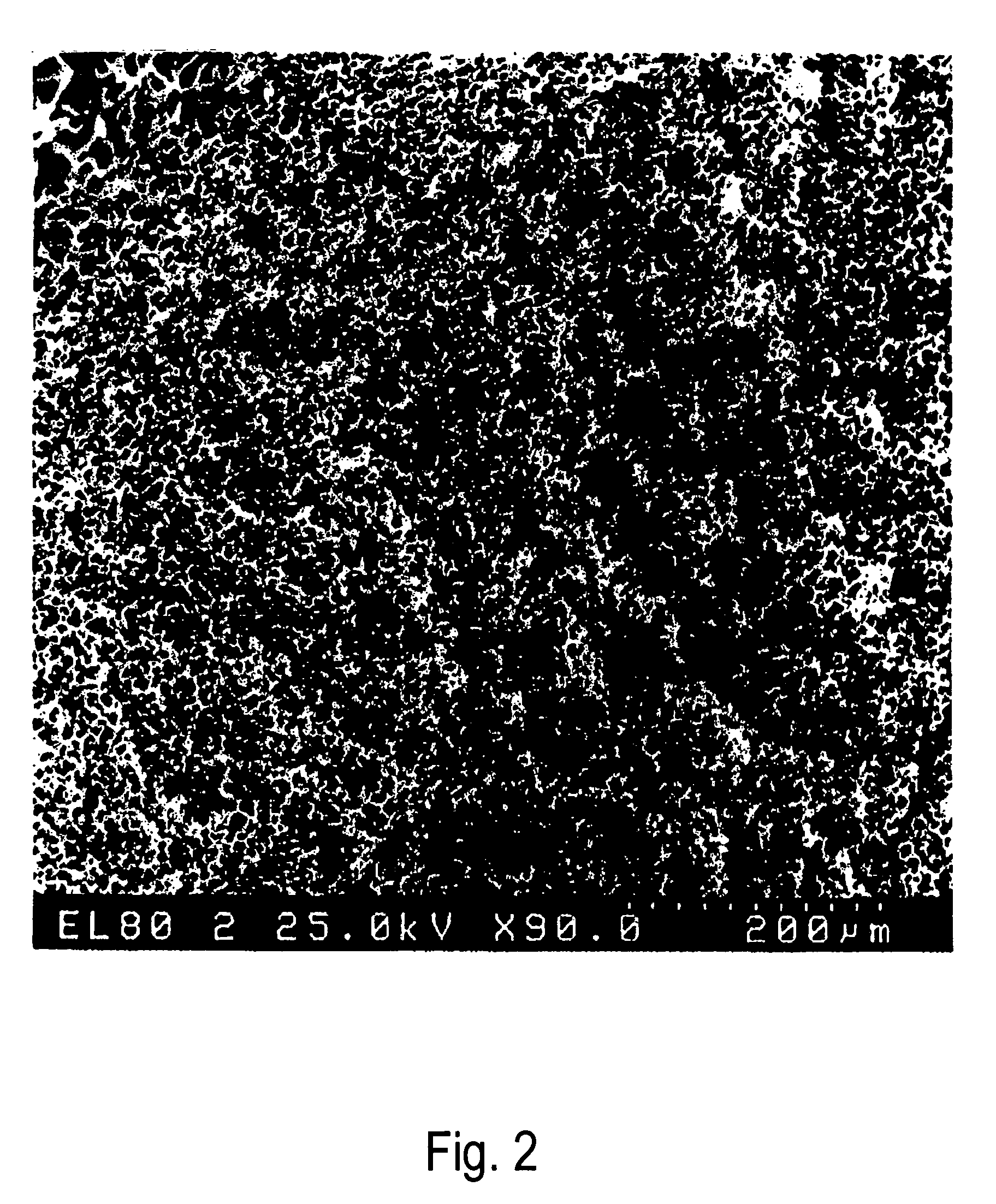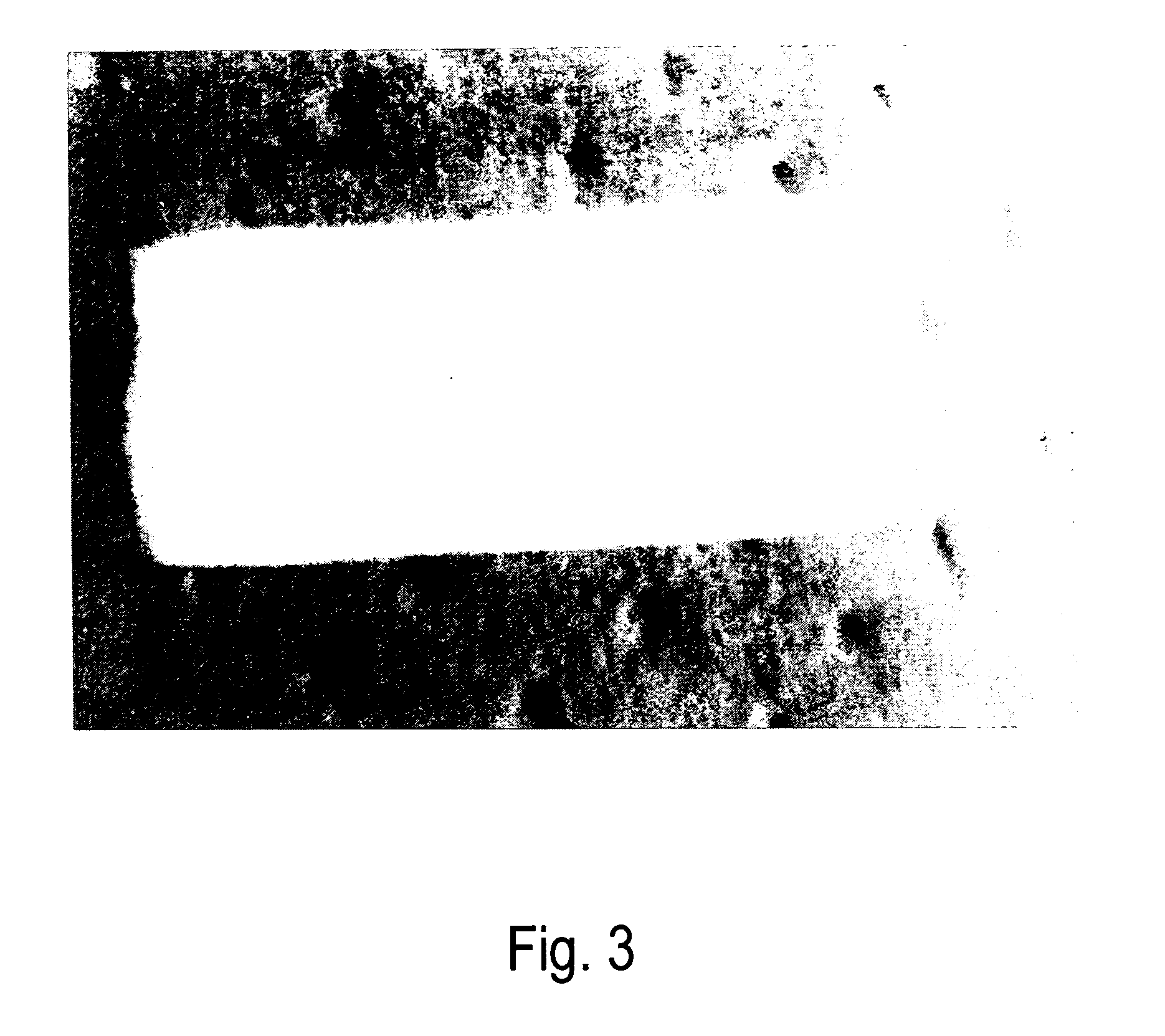Crosslinked elastin and process for producing the same
a technology of elastin and crosslinked elastin, which is applied in the direction of prosthesis, animal/human proteins, peptide/protein ingredients, etc., can solve the problems of high stress, inadequate regeneration of nerve or blood vessel tissue,
- Summary
- Abstract
- Description
- Claims
- Application Information
AI Technical Summary
Benefits of technology
Problems solved by technology
Method used
Image
Examples
example 1
Preparation of Water-Soluble Elastin
[0070] After adding 150 ml of 0.25 M oxalic acid to 20 g of powdered water-insoluble elastin (product of Elastin Products Company, Inc), the mixture was treated at 100° C. for 1 hour. After cooling, it was centrifuged (3000 rpm, 30 min) to separation, the supernatant was collected and placed in a cellulose dialysis tube (molecular cutoff: 6000-10,000), and dialysis was performed for 48 hours against deionized water to remove the oxalic acid. This was followed by lyophilization to obtain water-soluble elastin. The amino acid analysis results for the elastin starting material and the water-soluble elastin are shown in Table 1.
TABLE 1Water-solubleElastinelastin(mol %)(mol %)Aspartic acid0.6120.542Threonine0.7780.983Serine0.6650.964Glutamic acid1.6681.923Glycine33.2230.869Alanine22.7825.512Cysteine0.3760.562Valine13.37412.652Isoleucine2.5682.249Leucine6.2356.001Tyrosine0.7030.976Phenylalanine2.9673.023Lysine0.2790.381Histidine0.0370.063Arginine0.51...
example 2
Production of Crosslinked Elastin Using Glutaraldehyde as Crosslinking Agent
[0071] A 90 mg portion of the water-soluble elastin obtained in Example 1 was added to and dissolved in 161 μl of deionized water to obtain a water-soluble elastin aqueous solution. To this aqueous solution there was added 48.7 μl of 250 mM aqueous glutaraldehyde (product of Tokyo Kasei Kogyo Co., Ltd.), immediately producing a crosslinked elastin gel. It was attempted to cast the crosslinked elastin gel into a cylindrical molding template with a 2 mm diameter and 2 cm length, but the fluidity was too poor to allow casting. Casting into the template was difficult even when the amount of 250 mM aqueous glutaraldehyde addition was reduced to 1 / 10 the previous amount.
example 3
Production of Crosslinked Elastin Using Ethyleneglycol Diglycidyl Ether as Crosslinking Agent
[0072] A 36 mg portion of the water-soluble elastin obtained in Example 1 was added to and dissolved in 41.6 μl of deionized water to obtain a water-soluble elastin aqueous solution. To this aqueous solution there was added 42.4 μl of 287 mM aqueous ethyleneglycol diglycidyl ether, and upon thorough mixing, the solution was cast into a cylindrical template with a 2 mm diameter and 2 cm length and heated at 50° C. for one hour to obtain a crosslinked elastin gel. The obtained crosslinked elastin gel was thoroughly washed with deionized water, and upon conducting a simple stretching test by pulling with the fingers at both ends, it was found to be fragile against stretching deformation.
PUM
| Property | Measurement | Unit |
|---|---|---|
| Reaction temperature | aaaaa | aaaaa |
| Temperature | aaaaa | aaaaa |
| Temperature | aaaaa | aaaaa |
Abstract
Description
Claims
Application Information
 Login to View More
Login to View More - R&D
- Intellectual Property
- Life Sciences
- Materials
- Tech Scout
- Unparalleled Data Quality
- Higher Quality Content
- 60% Fewer Hallucinations
Browse by: Latest US Patents, China's latest patents, Technical Efficacy Thesaurus, Application Domain, Technology Topic, Popular Technical Reports.
© 2025 PatSnap. All rights reserved.Legal|Privacy policy|Modern Slavery Act Transparency Statement|Sitemap|About US| Contact US: help@patsnap.com



